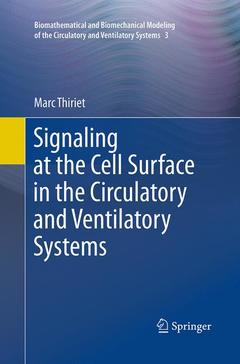Description
Signaling at the Cell Surface in the Circulatory and Ventilatory Systems, Softcover reprint of the original 1st ed. 2012
Biomathematical and Biomechanical Modeling of the Circulatory and Ventilatory Systems Series, Vol. 3
Author: Thiriet Marc
Language: English
Subjects for Signaling at the Cell Surface in the Circulatory and...:
Keywords
blood flow behavior; blood flow prediction; cardiovascular systems modeling; cell signalling pathways; ion and molecule carriers described; modeling respiratory function; modeling simulation of flows; physiological flows; receptors ligands; signaling mediators explained; ventilatory systems modeling; Systems Biology
Publication date: 08-2016
Support: Print on demand
Approximative price 158.24 €
In Print (Delivery period: 15 days).
Add to cartPublication date: 12-2011
982 p. · 15.5x23.5 cm · Paperback
Description
/li>Contents
/li>Comment
/li>
The volumes in this authoritative series present a multidisciplinary approach to modeling and simulation of flows in the cardiovascular and ventilatory systems, especially multiscale modeling and coupled simulations. The cardiovascular and respiratory systems are tightly coupled, as their primary function is to supply oxygen to and remove carbon dioxide from the body's cells. Because physiological conduits have deformable and reactive walls, macroscopic flow behavior and prediction must be coupled to nano- and microscopic events in a corrector scheme of regulated mechanisms when the vessel lumen caliber varies markedly. Therefore, investigation of flows of blood and air in physiological conduits requires an understanding of the biology, chemistry, and physics of these systems together with the mathematical tools to describe their functioning.
Volume 3 is devoted to the set of mediators of the cell surface, especially ion and molecular carriers and catalytic receptors that, once liganded and activated, initiate signal transduction pathways. Intracellular cascades of chemical reactions trigger the release of substances stored in cellular organelles and/or gene transcription and protein synthesis. Primary mediators are included in models of regulated cellular processes, but multiple secondary signaling components are discarded to allow simple, representative modeling and to manage their inverse problems.




